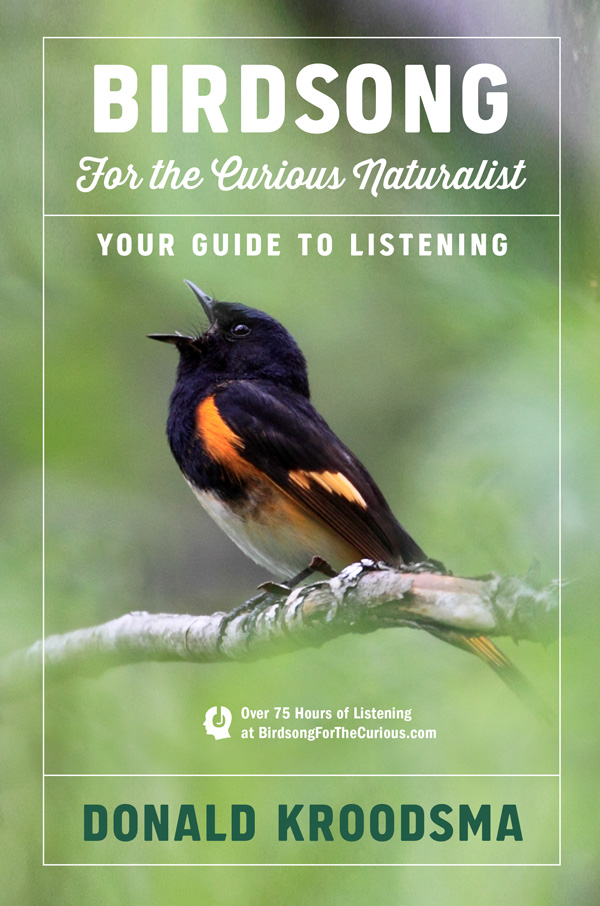American crow
Chapter 6: Song Learning Often Creates Complex Songs and Large Repertoires
Subchapter: What? "Songbirds" with no song?
From page 105 in the book.

Photo by Wil Hershberger
♫448. A caw sampler from two crows calling from a treetop. There's so much to hear about crows in this selection (see book text for additional information; a timeline for some of the highlights is given below). June 6, 2006. Hatfield, Massachusetts. (9:25)
0:00-0:19. Three chipping sparrow songs in foreground as a crow approaches from a distance.
0:10-1:07. Slow, sharp, ca-ca-ca-ca from first crow to land in the nearby tree.
1:11. Frantic calling begins, at double the ca-ca-ca pace, then slows again.
2:40. A second crow has arrived, and they call simultaneously. Listen again, and again, to that two-second burst of crowness. The first crow gives two sharp ca notes, the same ca notes he was giving before the second bird arrived, but then he switches to the hoarse caw that the second bird gave upon arriving. The two now match each other. I love these crows!
3:17. Simultaneous calling again, both using the hoarse caw.
4:45. More simultaneous calling, and matching, with a slightly different caw version.
5:15. One bird begins with longer caw notes than the other, but midway the two birds match each other with the shorter caw again.
And there's so much more to hear, the above being just a few examples of how these crows interact. Throughout, and in headphones, listen for slightly different versions of the hoarse caw notes, and how the two birds often match each other's versions.
♫449. A crow can stay on message with the same caw for some time. May 27, 2009. Oxbow, Hells Canyon, Oregon. (1:56)
♫450. Crows "mobbing" a dead magpie lying on the ground. May 27, 2009. Oxbow, Hells Canyon, Oregon. (3:03)
